Top Recommended Japanese Festivals that You Should Look Out
Traditional Japanese festivals are frequently celebrated around shrines and temples, with participants dressed in colorful garb and often hoisting heavy portable shrines on their shoulders.
1. Chichibu Night Festival秩父夜祭
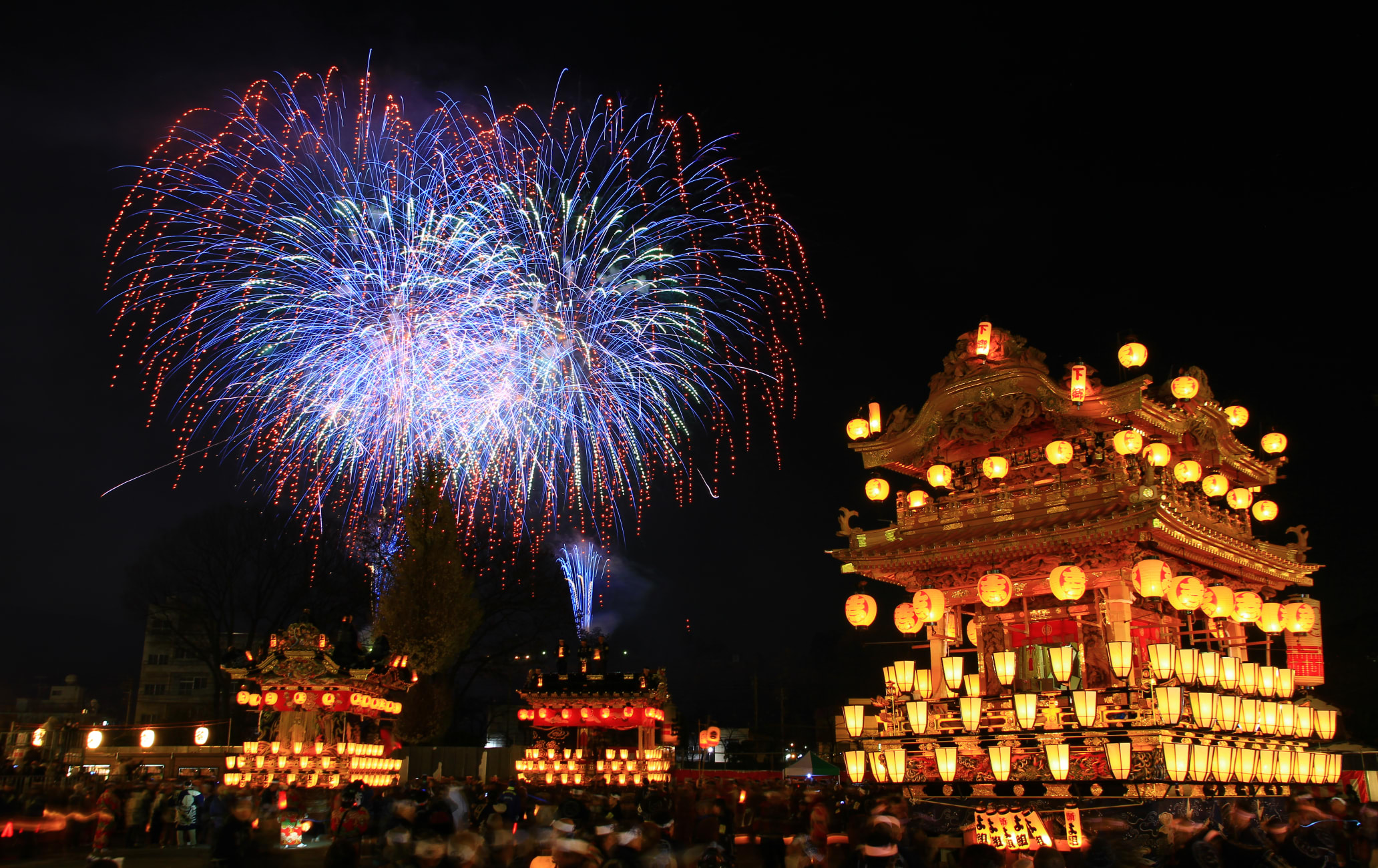
A winter night spectacle featuring 10-ton floats, music, and local sake
Saitama Prefecture’s Chichibu Yomatsuri—a night festival dating back at least 350 years that is held on December 2 and 3 each year—is one of the Kanto area’s most spectacular events. The festival draws a lively crowd of revelers to watch as 6 massive, ornately designed floats weighing between 10 and 20 tons are pulled through Chichibu’s main avenue to drum and flute music.
The locals top that feat on the third day by pulling the floats up a steep hill as the crowd exhorts them while drinking local sake and eating local specialties.
Don’t Miss
- Watching as the floats are brought up Dango Hill
- Seeing festival performances while drinking local sake
- The hours-long fireworks display on the third day
How to Get There
Train is the best way to get to Chichibu and the festival.
The Chichibu Yomatsuri is held right in downtown Chichibu, right outside Chichibu (Chichibu Railway) and Seibu-Chichibu (Seibu Railway) stations.
From Tokyo Station , take the JR and Chichibu Railway Lines to get to Chichibu between an hour and 45 minutes and two hours and 20 minutes, depending on whether you take the shinkansen or local trains to Kumagaya Station.
Alternatively, you can take the Laview limited express train (reservation required) from Ikebukuro in Tokyo to Seibu-Chichibu Station. This takes approximately an hour and 20 minutes.
One of the greatest displays in Japan
The Chichibu Yomatsuri is said to be one of Japan’s three great hikiyama or float festivals, along with the Gion Matsuri in Kyoto and Takayama Matsuri in Takayama , Gifu Prefecture . It’s the only one that takes place in the wintertime.
The spectacle here in Chichibu is intensified with a nighttime fireworks display on the third day that lasts for over two hours.
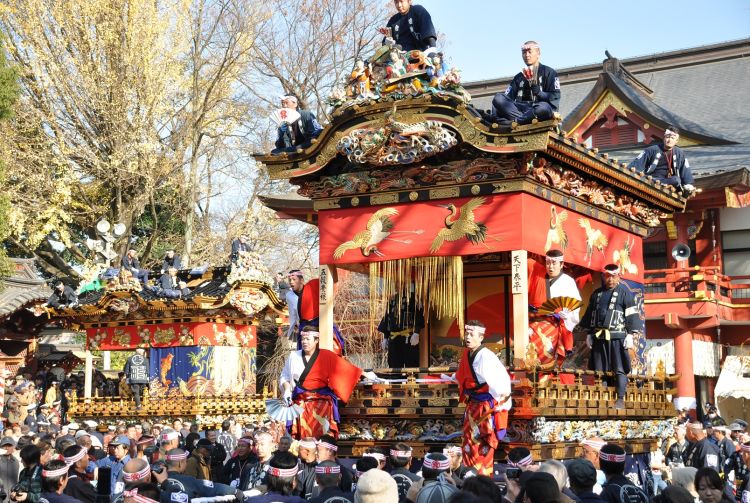
chichibu tourism association
A festival of lanterns, floats and portable shrines
During the two nights of the festival, massive floats with imaginative decorations are towed through the town. The floats are adorned with lanterns, tapestries of gilded wood carvings and depictions of beasts and mythical figures. They’re hauled along to the sounds of taiko drum and flute music.
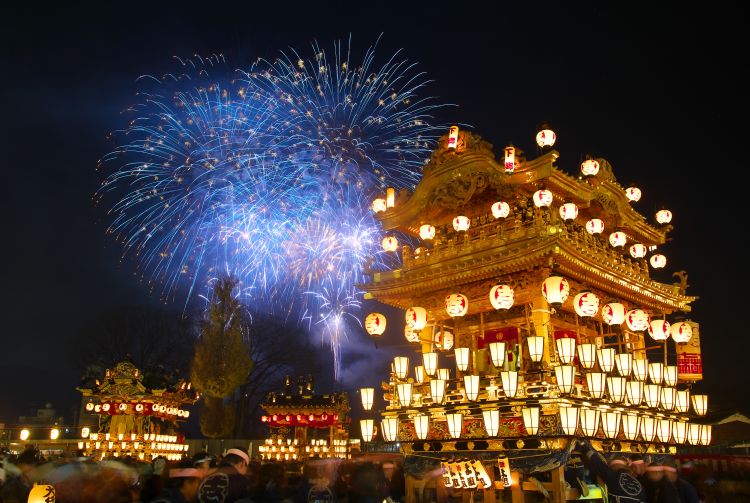
chichibu tourism association
An impressive feat of strength
The festival’s climax is on the second night when the 10- to 20-ton floats representing the different neighborhood associations of Chichibu are hauled up Dango Hill. It’s a steep journey, and the six floats are heavy. Once they finally reach the top, everyone at the festival rejoices. During the middle of it all, there’s a fireworks display that lasts well over two hours, lighting up the floats and the nighttime scene.
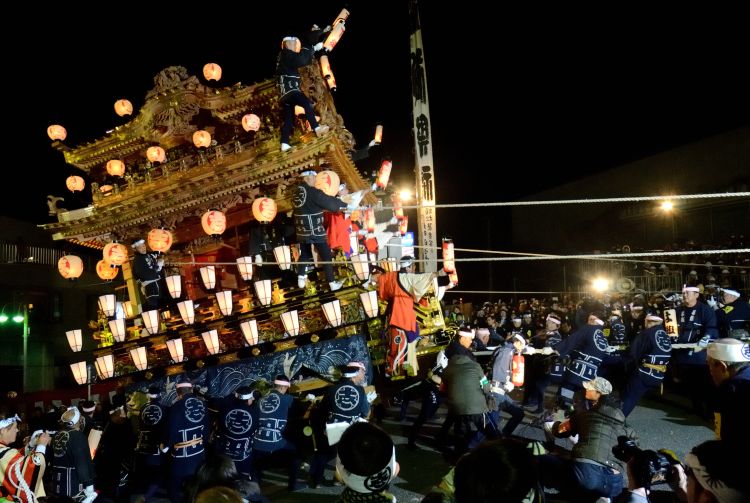
2. Gion Matsuri祇園祭
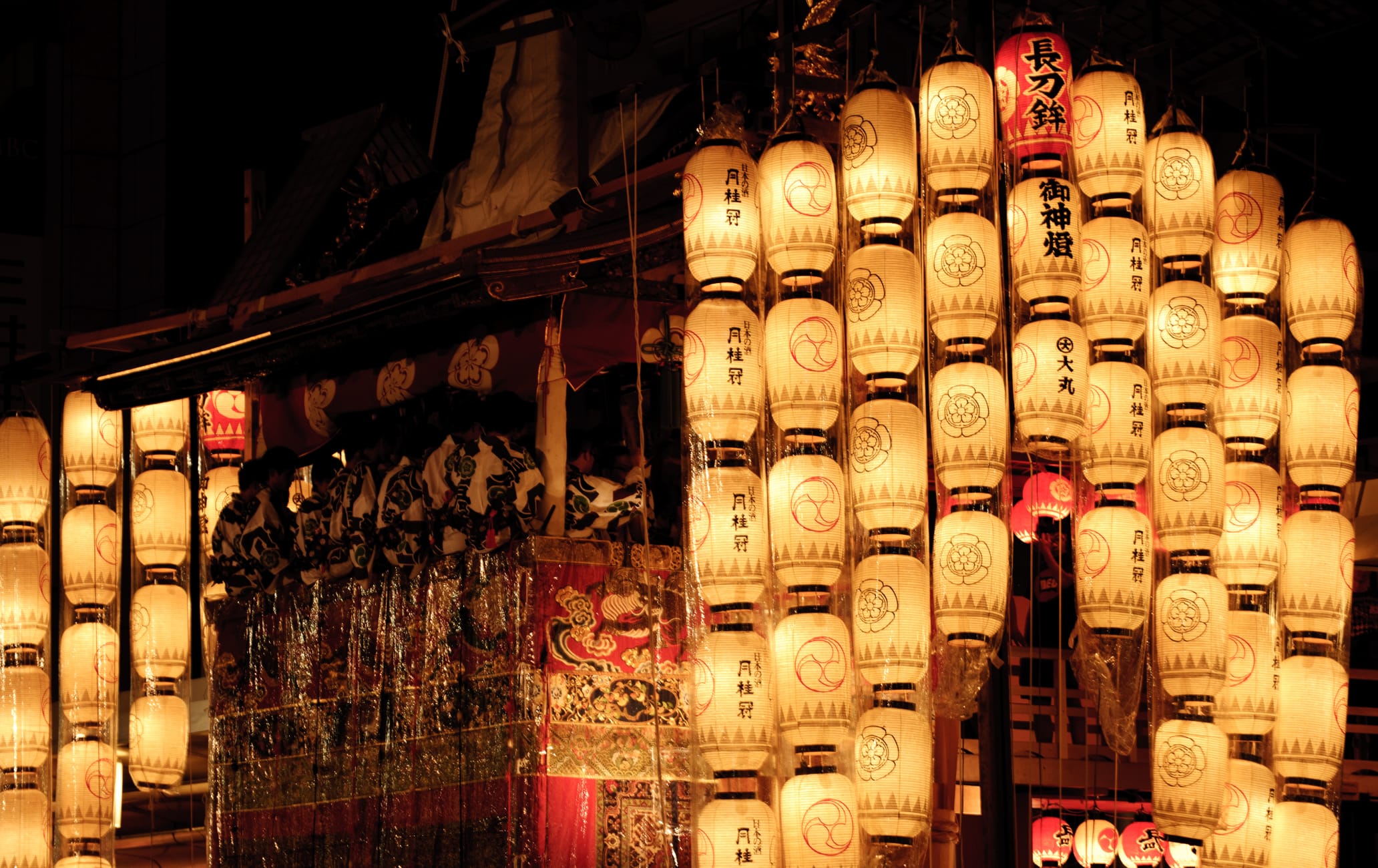
Celebrate Kyoto’s hottest summer festival—the legendary Gion Matsuri
The Gion Matsuri dates from 869 and is the country’s biggest festival. The festival turns the city into a huge party, especially during the two periods in mid-July when elaborately-decorated multi-ton floats are displayed and then pulled through the streets.
If you hope to attend this wildly popular festival, make sure to reserve your accommodation months in advance.
Don’t Miss
- The Yoiyama evening street parties on the three days preceding the parades
- Family heirlooms displayed during the Byobu Matsuri
- Watching the giant floats execute hair-raising turns
- Soaking up the atmosphere with the locals in yukata, and snacking on street food
How to Get There
The Gion Matsuri takes place in central Kyoto and can be easily accessed by subway, bus, taxi or on foot.
The main celebrations of the festival are centered around Shijo, Kawaramachi, and Oike streets. It is relatively easy to find a spot to watch the parade from along the route, provided you pay attention to potential road closures.
Quick Facts
Gion Matsuri is held over a period of one month in July
The main processions take place on July 17 (Saki Matsuri Junko) and July 24 (Ato Matsuri Junko)
The biggest floats in the parade are known as yamaboko and weigh up to 12 tons

The origins of the festival
The Gion Matsuri began in 869 as a way to appease the gods during an epidemic. Every year, as per tradition, a local boy is chosen as a sacred messenger to the gods. From July 13 until the first parade ends on July 17, he sits on one of the many elaborate floats and his feet never touch the ground.
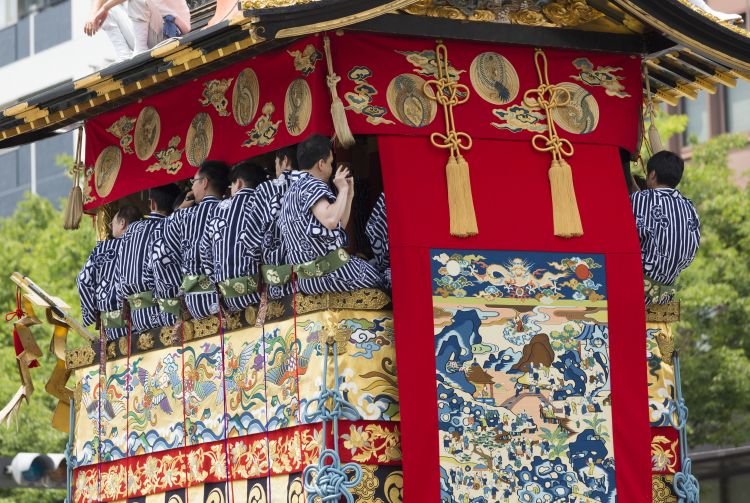
A float at Gion Matsuri
Gion’s gorgeous floats
There are two types of floats at the Gion Festival: yama and hoko. Hoko can be up to 25 meters tall and weigh up to 12 tons. Both yama and hoko are elaborately decorated and adorned with exquisite craftwork such as woven fabric, dyed textiles and sculptures. They are so beautiful that they are sometimes referred to as “mobile art museums.” There are two processions during the festival when the floats are paraded through downtown Kyoto from 9 a.m. to 2 p.m. The largest of the two is on July 17 with 23 floats, and the second on July 24 with about half that number.
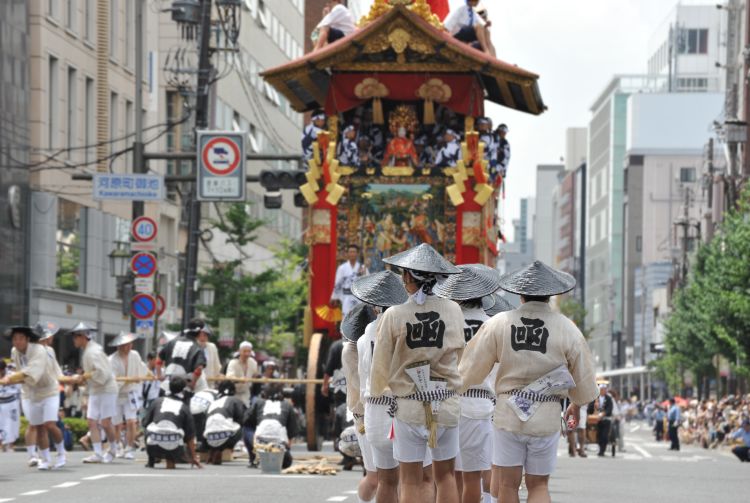
Night parties
Each parade is preceded by three evenings of celebration known as Yoiyama. (The 14,15,16 and 21, 22, 23 of July respectively.) These three nights allow people to visit the floats, which are parked in different areas of the city. Around the floats, people can buy good luck charms called chimaki and enjoy local street food. Join the locals in their colorful cotton yukata robes and soak up the atmosphere of this traditional Kyoto festival.
See the private treasures of the people of Kyoto
The Folding Screen Festival, known as the Byobu Matsuri, is an event that takes place during the Yoiyama days of the festival. Wealthy families in the Shinmachi and Muromachi areas show off their private treasures such as screens and kimonos, displaying them in front of their houses or even welcoming people into their homes for viewing. Local merchants also proudly exhibit their art collections.
3. Sapporo Snow Festivalさっぽろ雪まつり
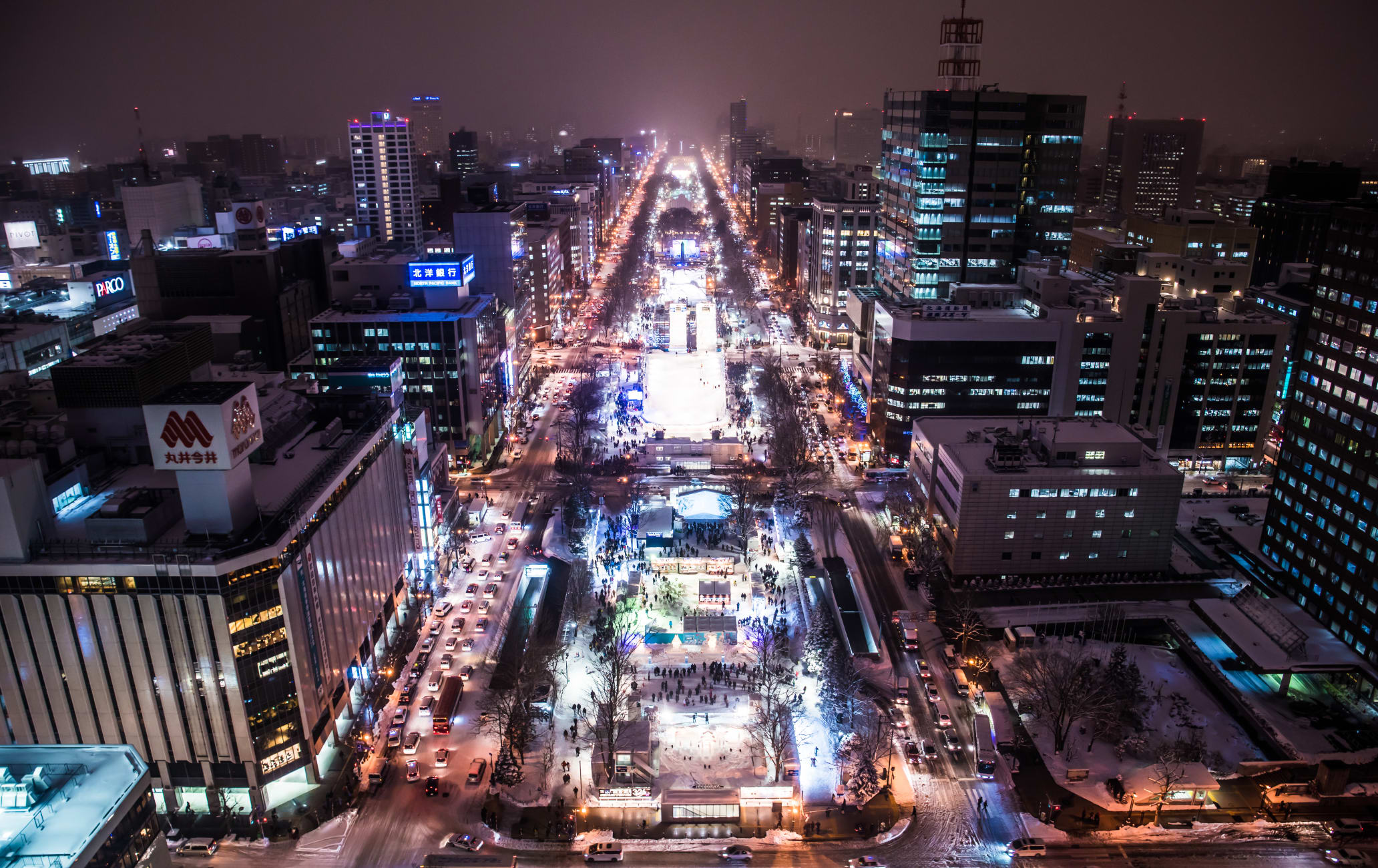
One of the planet’s greatest snow spectacles
Using one of Sapporo’s most abundant natural resources and their imaginations, a few students fashioned several snow sculptures in Odori Park way back in 1950. Fast-forward to today, and the Sapporo Snow Festival is a wintertime extravaganza that draws millions every year. Visit for a taste of Hokkaido hospitality, great food and drink, and stunning illuminations.
Don’t Miss
- Watching the projection mapping shows
- Going to the Sapporo Big Air event—a ski and snowboard jump contest
- Listening to live music near Sapporo TV Tower and at other stages around Odori Park
How to Get There
You can reach Odori Park , the primary venue, on foot or by taxi or subway easily from most places within the city.
Odori Park is a 15-minute underground walk south from Sapporo Station or two minutes by subway. Catch either the Nanboku or Toho subway lines and go one stop to Odori Park Station.
Quick Facts
The International Snow Sculpture Contest began in 1974
There are about 400 snow and ice statues at the festival
Soldiers from Japan’s Ground Self-Defense Forces help with the larger sculptures

When the magic happens
The festival itself runs for a week in early February, but sculpting begins up to a month beforehand, and the process is almost as magical as the result. Remember to bring some nonslip winter shoes or boots, or buy some strap-on spikes from a convenience store.
Breathtaking scale and numbers
They think big in Sapporo : expect five large sculptures and a host of smaller ones in Odori Park . Towards the far west end of the park, international snow-sculpting teams from about 20 different nations compete in the festival each year.
Illumination and projection mapping shows light up the night
Be sure to stay around into the night to take in some of the amazing light shows projected right onto the building-sized sculptures. The shows start as soon as it gets dark and run for roughly five to ten minutes each. Large trees are also decorated, and there are sculptures lit up throughout the park.
Other cool ways to have fun
Take some runs down the big snow slides, ride a snow raft or have an epic snowball fight at Tsudome. Later on, have a warm beverage or two at the Susukino venue’s ice bar, and enter the ice sculpture contest there if you’re feeling creative. A camera is a must for this festival, but you can also get a professional photo taken for a fee.
Carving out the competition
You can see lots of beautiful ice sculptures lit up all the way along the middle of the street starting at Susukino Station, and ending up near Nakajima Park. There are also small bars, some made out of ice, for a quick drink as you walk along looking at the sculptures.
Eat, drink and take part of the festival home with you
You can sample local produce, seafood, and meats from all around Hokkaido at the festival as well as famous dishes from restaurants. Try the hot mulled wine, and if you get chilled sit in the tents or rooms available near the food stalls to warm up. There are plenty of souvenirs, toys, t-shirts, knick-knacks, and postcards at the festival as well.
Also Read: Japan Cherry Blossom 2023 Forecast
4. Nachi Ougi Matsuri (Nachi Fire Festival)那智の扇祭り(那智の火祭り)
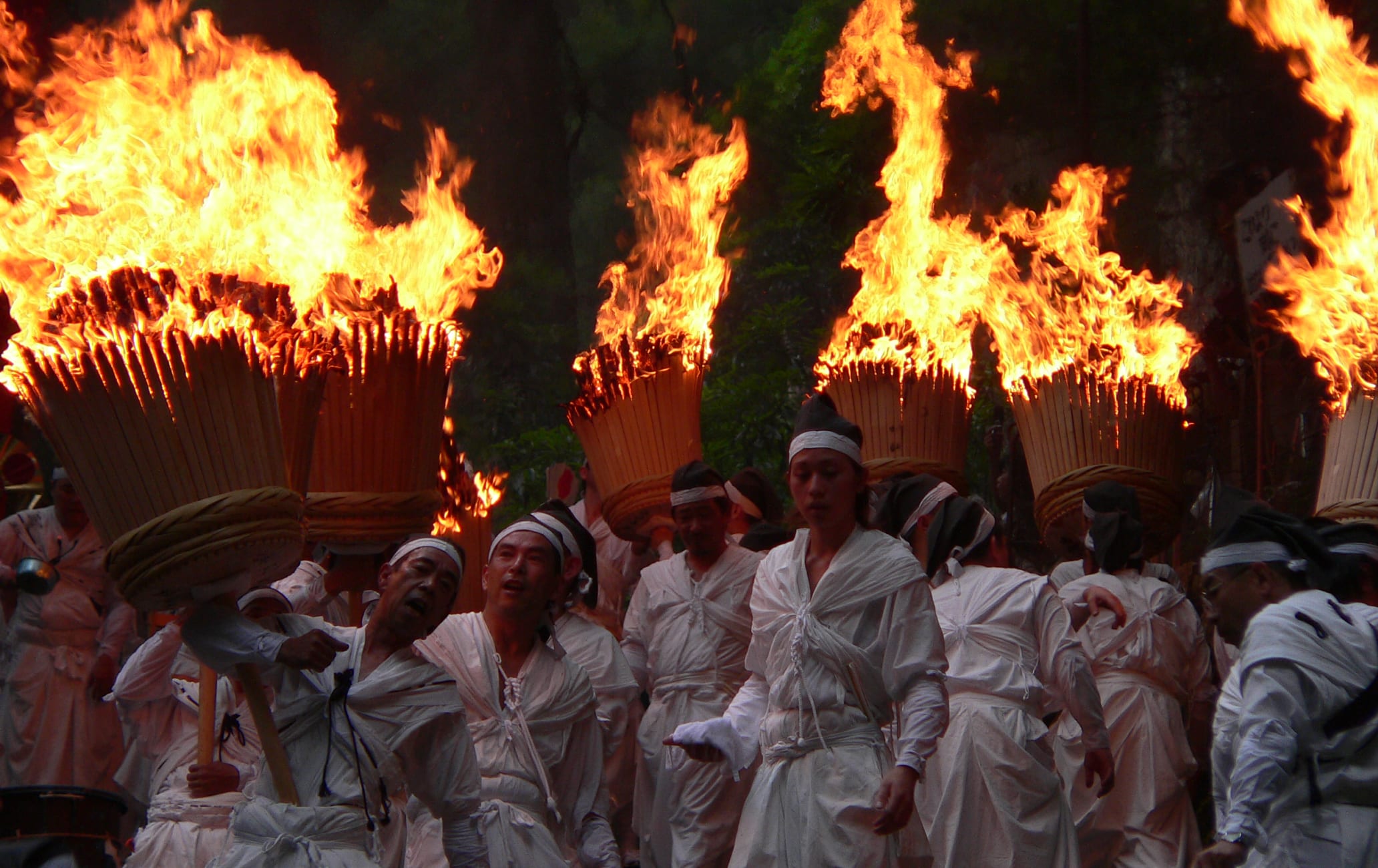
The fire festival at a Grand Shrine near a majestic waterfall
The stone staircase that leads visitors to Nachi Waterfall from Kumano Nachi Taisha Grand Shrine in Wakayama is generally taken slowly while enjoying the lushness of the surrounding nature.
However, once a year on July 14, this peaceful staircase is engulfed by roars and cheers during the Nachi Ougi Matsuri, or Nachi Fire Festival.
Don’t Miss
- Watching the torch-bearers wield their flaming beacons amid the religious chanting and thick smoke
- Exploring Kumano Nachi Taisha Grand Shrine and Nachi Waterfall
How to Get There
Kumano Nachi Taisha Grand Shrine is located in the Nachisan area , which can be accessed by bus from nearby JR Kii-Katsuura Station.
A 30-minute bus ride from Kii-Katsuura Station will take you to the Nachisan bus stop, the nearest stop to Kumano Nachi Taisha Grand Shrine. The stop before, Nachi-no-Taki-mae bus stop, leads to Nachi Waterfall .
Purify the divine spirit
The Nachi Ougi Matsuri is a Shinto ritual where 12 portable shrines representing 12 divine spirits of the waterfall are purified by flaming torches. It is one of the most famous and breathtaking festivals in the region.
5. Nabana no Sato Winter Illuminationなばなの里イルミネーション
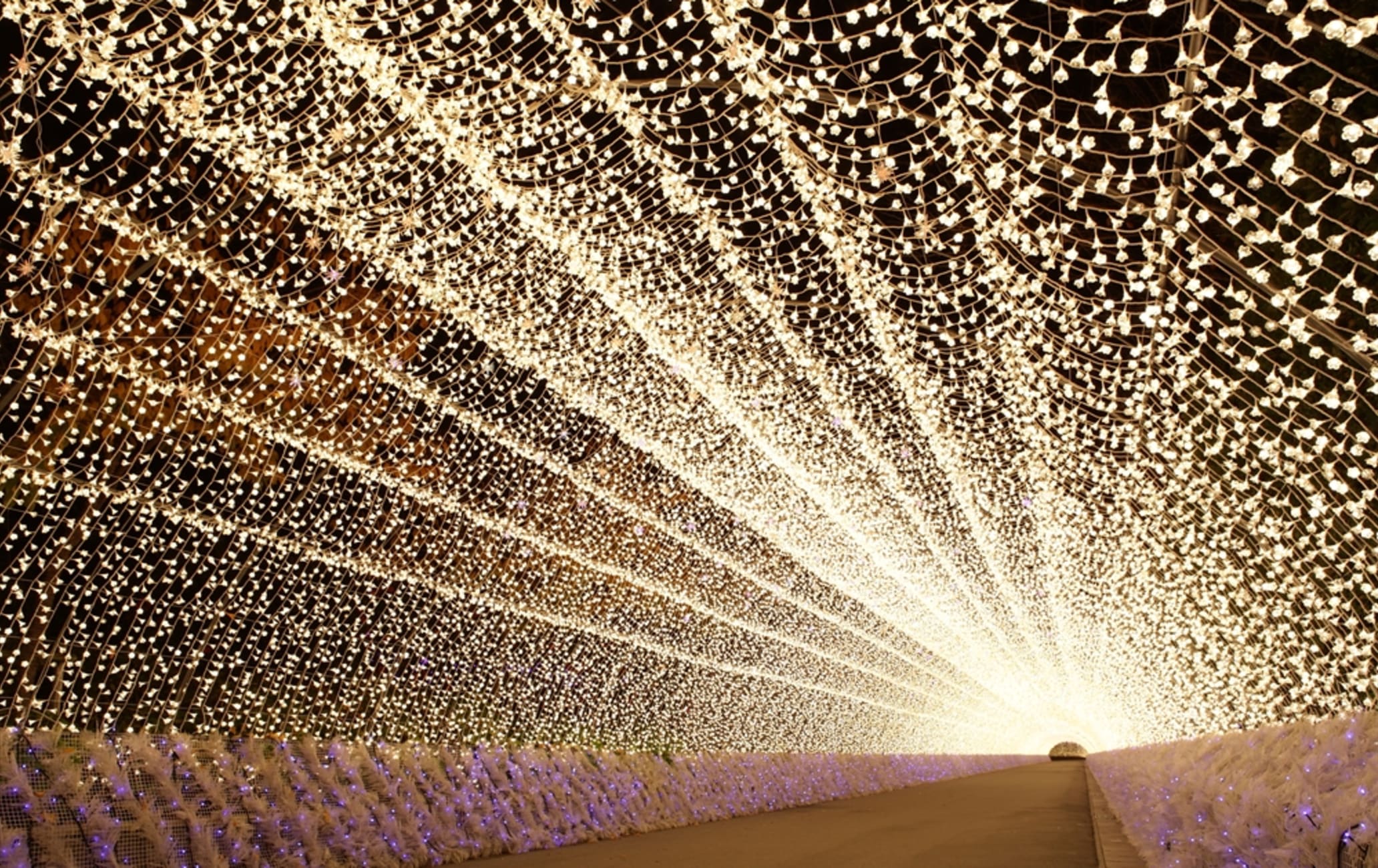
Majestic illuminations in a picturesque setting
In Japan, the competition to produce the best winter illuminations is a fierce one, and the gardens at Nabana no Sato are certainly a contender for the top prize. If you happen to be in the Nagoya area or Mie Prefecture between late October and late May, a visit to see this stunning extravaganza of flowers and radiance will surely be rewarding.
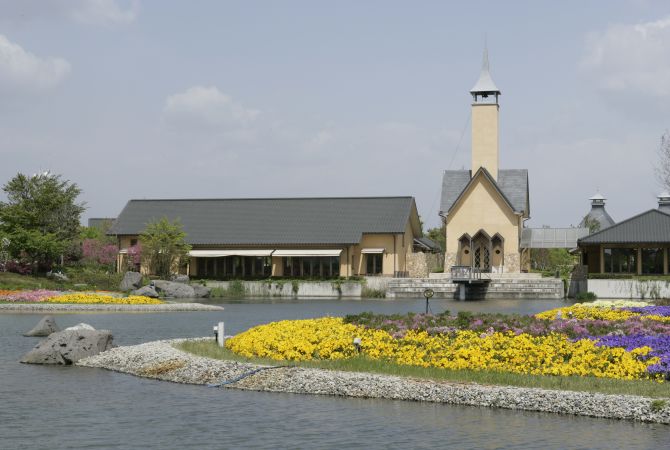
Don’t Miss
- A romantic setting for couples that will impress kids, too
- An aerial view from the leaning Island Fuji observation deck
- Beautiful photo opportunities galore
How to Get There
The Winter Illumination is in the Nabana no Sato Flower Park , which is part of Nagashima Resort . If you’re not taking a car, buses from downtown Nagoya and Chubu International Airport can get you to the flower park in 35 or 50 minutes, respectively. Drivers taking the local expressways should exit at either the Wangan-Nagashima Interchange or the Nagashima Interchange.
A show of light that is simply astounding
The flower village is worth a visit year-round thanks to the Nabana no Sato Winter Illumination, which is the largest such display of lights in Japan.
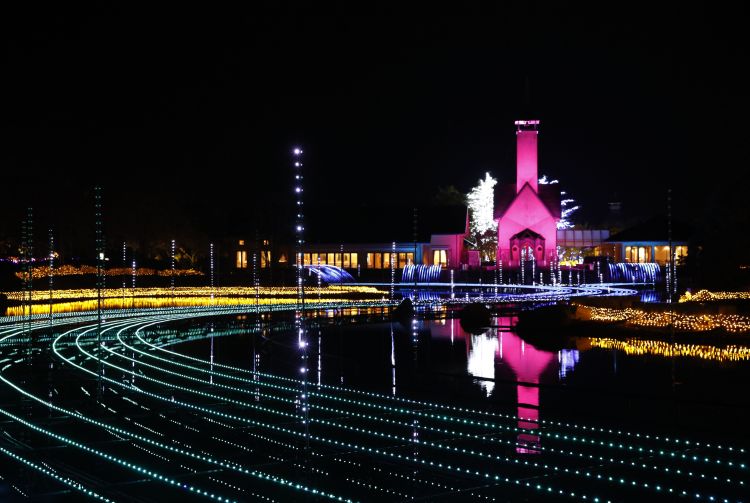
Some of the highlights include the river of lights, the tunnel of light, the illuminated metaphorical sea, and the twin trees. With all the brilliant displays, you should have little problem finding the right lighting for nighttime photography.
The best views of the dazzling display can be had at the Observatory or at the taller Island Fuji observation deck.
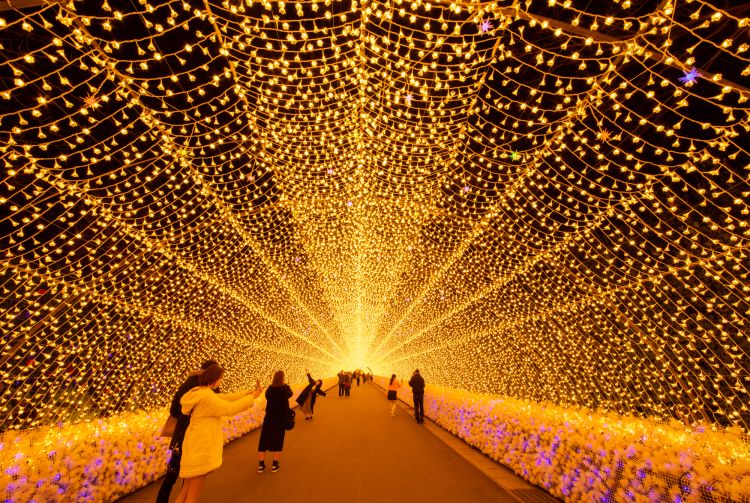
Also Read: 19 Newest Attractions should Visit on Japan
6. Kumano Fireworks Festival熊野大花火大会
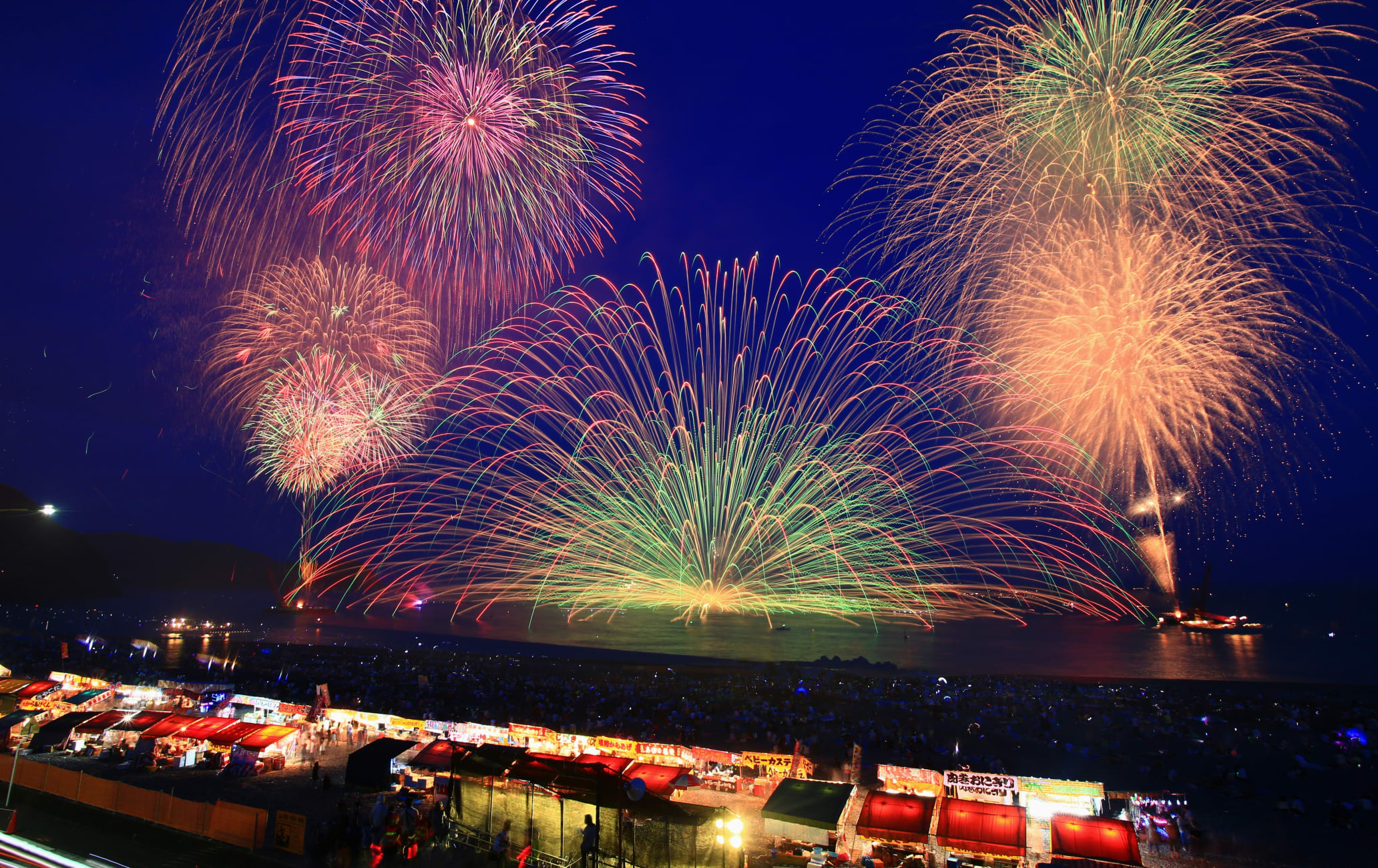
Sit alongside the water and take in a show of flashing light and booming sound
The Kumano Fireworks Festival, held every August 17, takes place at the perfect summer locale: the beach. After a day checking out the sights around Shichiri Mihama Beach , take in this fantastic fireworks show, a 300-year festival presented as part of the local Obon festivities.
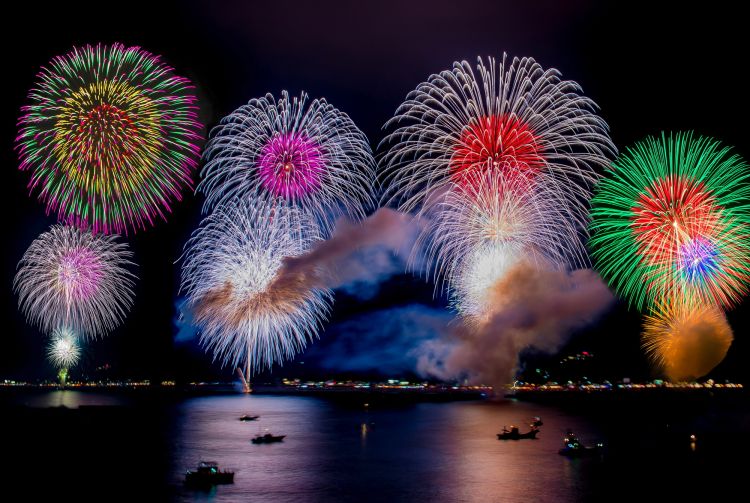
Don’t Miss
- Boats firing a volley of explosive fireworks into the night sky
- The festive beachside atmosphere
How to Get There
The beach where the event takes place can be accessed by train plus a short walk.
Take the JR Kisei Main Line to Kumanoshi Station, then stroll south across the Ido River and onto the beach. If you’re traveling by car, keep in mind that some roads are closed for the show and you may get stuck in traffic. Parking may also be difficult to find.
Buses and trains from larger cities like Nagoya , Kyoto and Osaka can take between four to five hours.
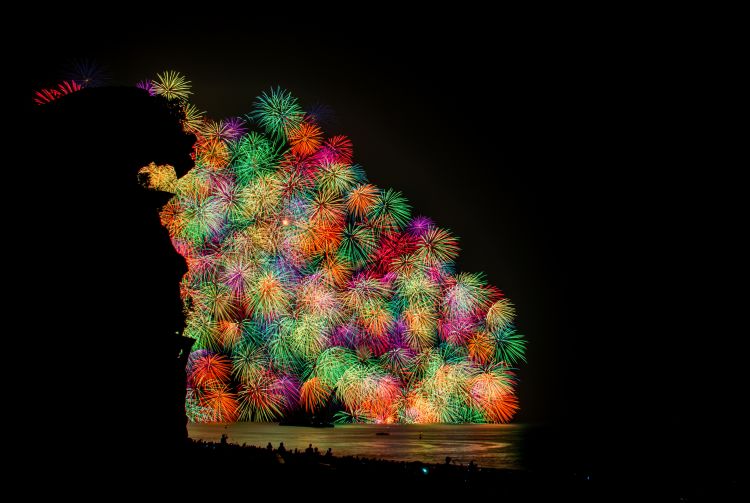
An annual summer event anticipated by the whole community and visitors alike
The highlights of the two-hour show, which begins at around 7 p.m., are when two boats launch a barrage of fireworks into the air, and the brilliant pyrotechnic display from the Onigajo rock formation out in the water. If you want to guarantee a spectacular view, reserved seating is available for a small fee.
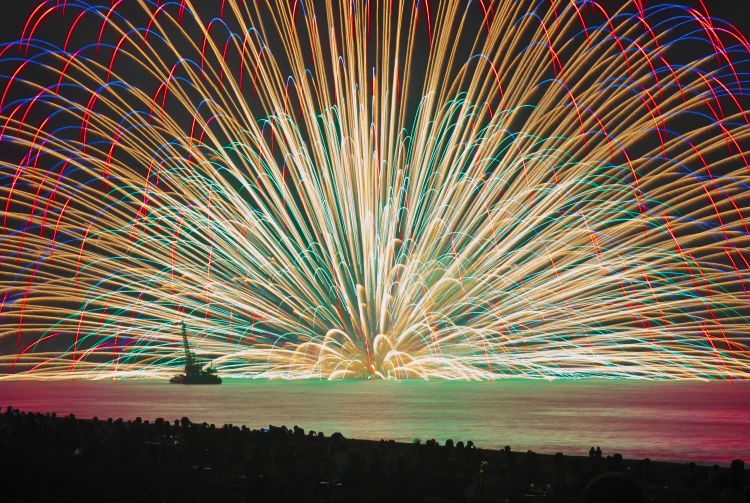
Source: https://bit.ly/3A6lySY




